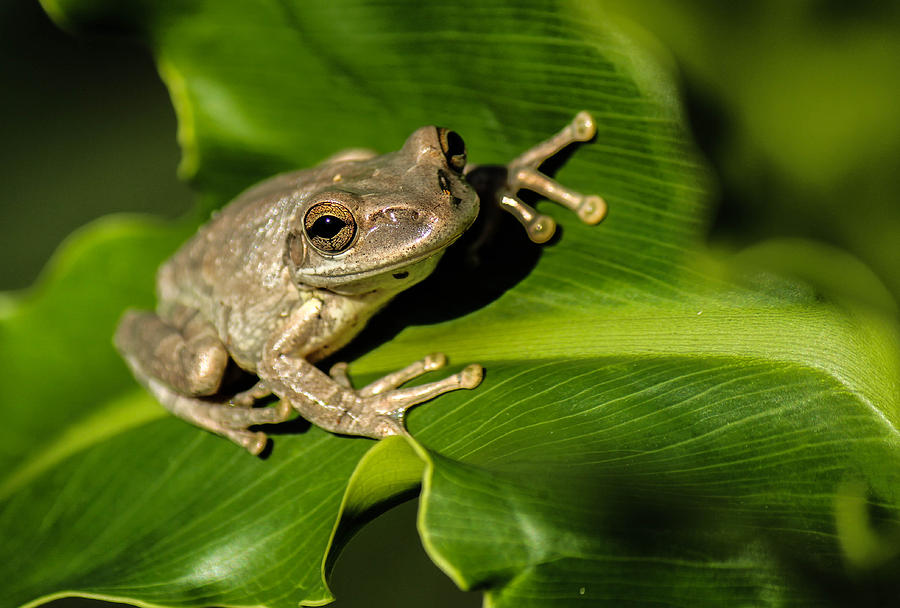The Cuban tree frog (Osteopilus septentrionalis), native to the islands of Cuba and the Bahamas, has become an invasive species in Florida and other regions due to human introduction through the pet trade. This highly adaptable frog poses a significant threat to native ecosystems, as it outcompetes native species for food and habitat and carries diseases harmful to local wildlife.

Image: www.wikihow.com
In this comprehensive guide, we delve into the complexities of Cuban frog ecology and provide expert-backed strategies on how to effectively manage or eliminate this invasive species, ensuring the preservation and resilience of our natural environments.
Cuban Frogs: An Invasive Threat to Natural Ecosystems
Cuban tree frogs are characterized by their distinctive appearance, featuring large, bulbous eyes, bright green or yellow coloration, and sticky toe pads that aid in climbing. They have a voracious appetite and consume a wide range of prey, including insects, small vertebrates, and even other frogs. This extensive diet allows them to thrive in various habitats, including wetlands, forests, and urban areas.
Their reproductive capacity is another significant concern. Cuban frogs lay multiple clutches of eggs in temporary bodies of water, and each clutch can contain up to 2,000 eggs. This rapid reproduction rate exacerbates their population growth and intensifies their impact on native species.
Ecological Consequences of Cuban Frog Invasion
The introduction of Cuban frogs into non-native habitats has severe consequences for the ecosystem’s equilibrium. Here are some key impacts:
Competition and Predation:
Cuban frogs voraciously consume insects, mollusks, and small vertebrates that serve as food sources for native species. This competition leads to a decline in native populations, disrupting the ecological balance. Furthermore, these frogs prey on native frogs, contributing to their further depletion.

Image: pixels.com
Disease Transmission:
Cuban frogs carry a fungal pathogen known as Batrachochytrium dendrobatidis (Bd), which causes chytridiomycosis in frogs. This disease, fatal to many native frog species, poses a grave threat to amphibian populations.
Habitat Degradation:
Cuban frogs utilize tree hollows and other natural cavities for shelter, potentially disrupting the habitat of native species that rely on these same structures, leading to a decrease in biodiversity.
Effective Strategies for Cuban Frog Management or Elimination
Given the detrimental effects of Cuban frogs on native ecosystems, implementing effective management strategies to control their population is crucial. Here are several approaches that have proven successful:
Trapping and Removal:
Manual trapping is one of the most direct methods to reduce Cuban frog populations. Traps can be deployed in areas where frogs are known to congregate, such as near water bodies or under cover. Regular monitoring and removal of captured frogs is essential.
Habitat Modification:
Altering the habitat to make it less suitable for Cuban frogs can be an effective deterrent. This includes removing debris, filling in tree hollows, and reducing the availability of standing water. Additionally, measures can be taken to increase the presence of native predators.
Biological Control:
Utilizing natural predators to control the Cuban frog population is an approach that has been explored. However, this method requires careful consideration and implementation to avoid unintended consequences on native species and the wider ecosystem.
Community Outreach and Collaboration:
Public engagement is crucial in combating invasive species. Educating the community about the issue and encouraging citizen science programs can increase awareness and contribute to monitoring efforts. Collaboration with environmental organizations and agencies is also essential to develop and implement comprehensive management plans.
How To Get Rid Of Cuban Frogs
Conclusion
Addressing the problem of Cuban frogs in non-native habitats demands a multifaceted approach that balances environmental protection and human responsibility. By implementing targeted management strategies, engaging communities, and supporting scientific research, we can minimize the impact of this invasive species and preserve the integrity of our ecosystems for future generations. Remember, every action counts, and the collective effort of individuals and organizations is key to achieving success in the fight against invasive species.







